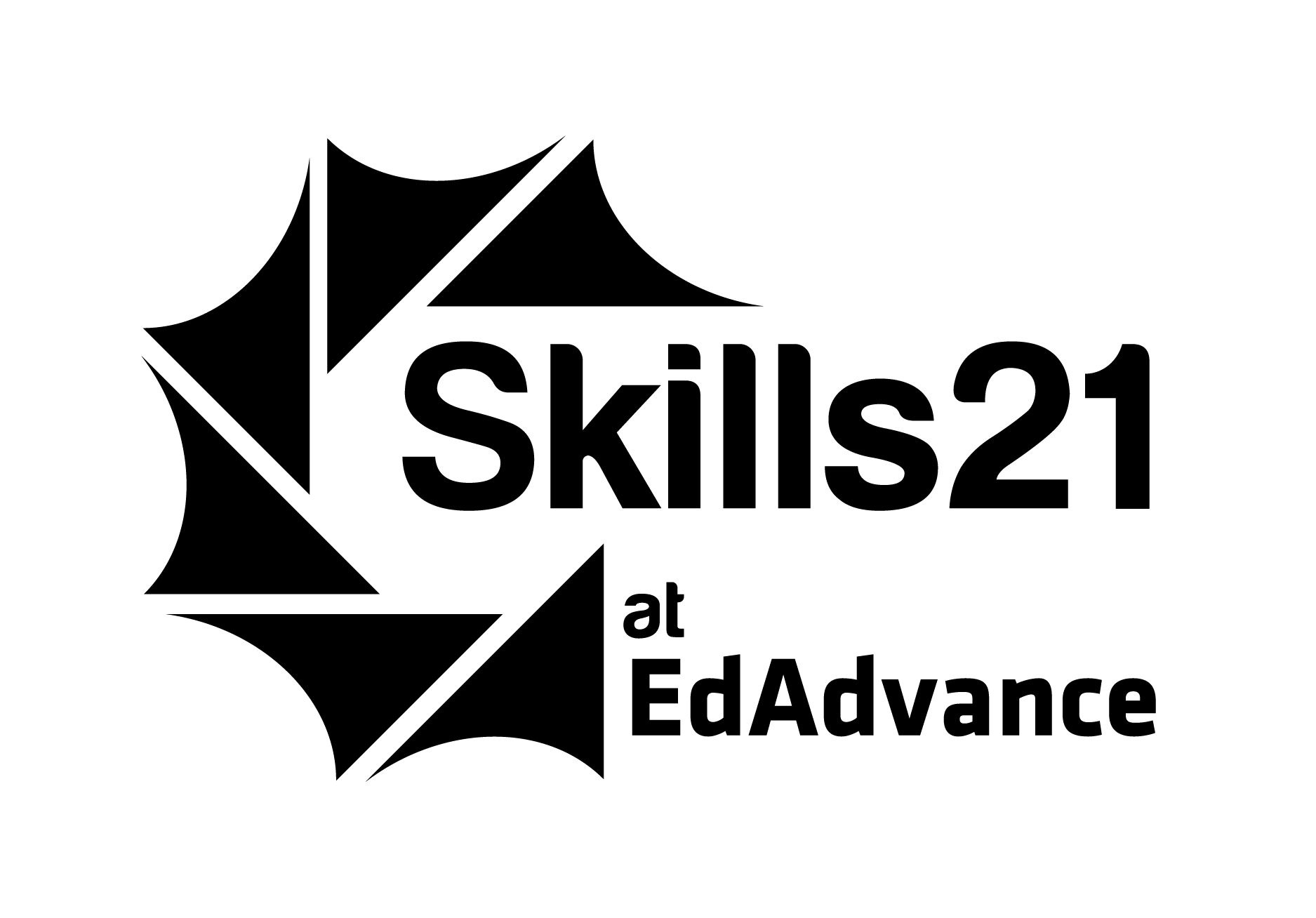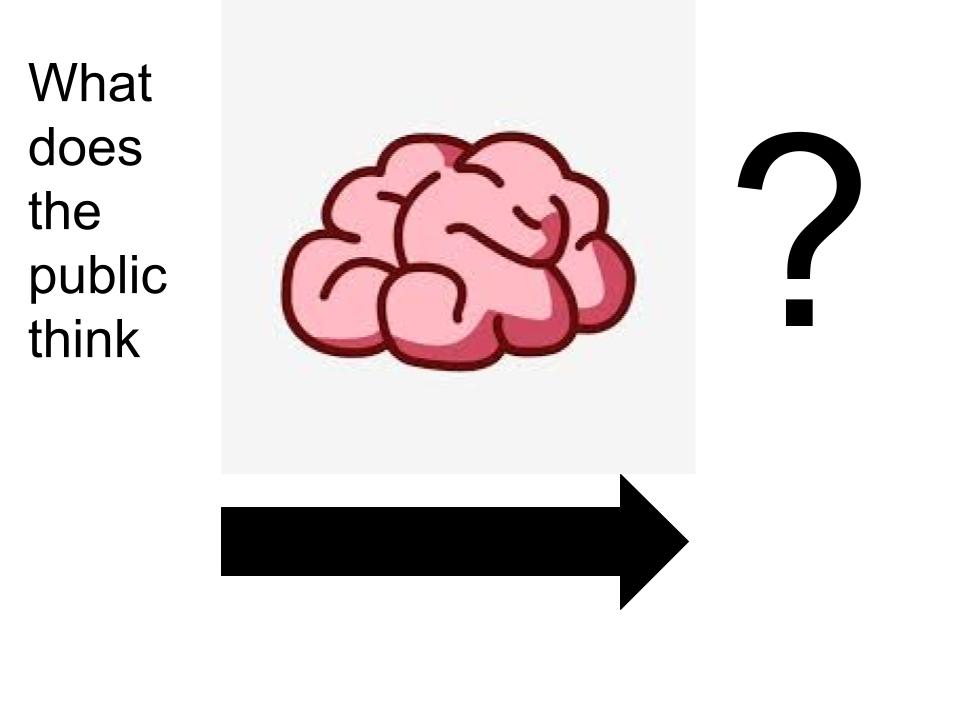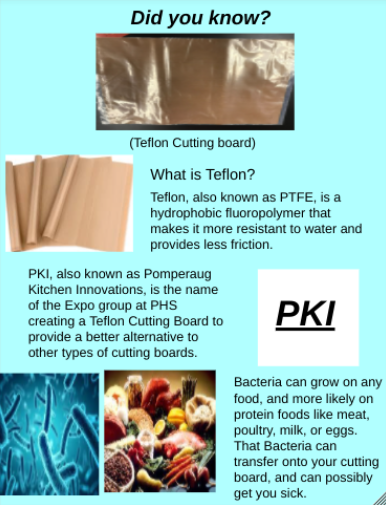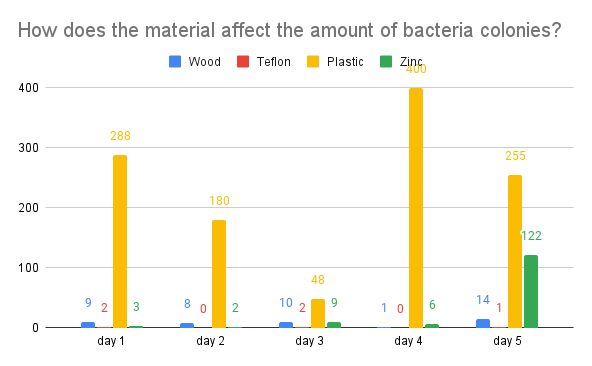Written Documentation

Lab documentation
Our hypothesis:
If the cutting board has bacteria on it, then the Teflon layer will trap the bacteria, stopping the bacteria from spreading to your food, and keeping your tools clean.
Our initial experiment:
shows just how this worked. Our experiment is to take a petri dish and test bacteria, and then do the same thing on a Teflon sheet. Then we will compare the results and see there were fewer bacteria on the Teflon sheet, proving our hypothesis correct.
Our new experiment:
Our experiment is to inoculate the materials using netralized bacteria and then after 15 seconds wipe the materials off to simulate cleaning the cutting board, then we test if bacteria has been growing on our “cutting board” samples, proving if our hypothesis was correct or not.
Attachments

Written Documentation
On 4/26-We started our experiment by washing our hands for 20 seconds, dried them then put on gloves and goggles and sanitizing everything. We washed our hands and put on gloves and took some isopropyl alcohol and cotton balls and used them to sanitize each petri dish as well as the contents in them and left them to dry so we can start our cultures tomorrow. We properly took off our gloves and goggles then washed our hands for 20 seconds with soap and water.
On 4/27- We washed our hands for 20 seconds, dried them then put on gloves. We took our bacteria out and our inoculation sticks as well as well as our materials. We dipped the loop end of the inoculation strips inside the vile of bacteria, avoiding touching any of the sides maintaining a steady grip on the end of the stick. We opened the petri dishes partially and pressed down on the strip one of each material down the middle popping the inoculation bubble, after re-inoculating every time, keeping the lid over the petri dishes and closing them after inoculating them with bacteria. We then proceeded to label everything with the date and material and started cleaning up, wiping down where we worked and putting everything back where it was and throwing out the swabs then taking off our gloves, goggles and washing our hands.
On 4/28- We washed our hands for 20 seconds, dried them then put on gloves. We heated up the agar and poured it into the petri dishes just until it touched the sides. We then waited for the petri dishes with agar to set. Then we swabbed section 2 of our 4 petri dishes and then swabbed the agar and put it in the incubator. We then proceeded to label everything with the date and material and started cleaning up, wiping down where we worked and putting everything back where it was and throwing out the swabs then taking off our gloves, goggles and washing our hands.
On 4/29- We started by washing our hands for 20 seconds, then dried them and properly put gloves on and our goggles. Then we took our 4 petri dishes with agar out and put each one under a microscope to test. We tested to see how much bacteria we could see, if there was any. Our results were negative. We then put them back into the incubator to let them further grow bacteria. We heated another bottle of agar and let it cool back in the room. Once it was cooled down enough, we took a total of 7 petri dishes and filled each with the agar. We poured it in by slightly opening the lid and filling it until the agar touched all the sides. Taking off our gloves and goggles properly and then washing our hands for 20 seconds with soap and water
On 4/30 We started by washing our hands for 20 seconds with soap and water then putting on gloves. We then put on goggles and took out isopropyl alcohol and cotton balls and sanitized everything. Leaving it to dry after the weekend and properly took off our gloves and goggles sanitizing them in the cabinet and throwing out the gloves then washing our hands for 20 seconds again with water and soap.
The experiment results were all inconclusive and we saw no growth of microorganisms even under the microscope during our experiment after our testing. On April 30th we decided to try a new experiment and decided to test one last time before scrapping the one prior.
On 5/3- We started by washing our hands for 20 seconds with soap and water then putting on gloves and goggles. We took bacteria and inoculating strips as well as our materials as well as four damp school paper towels as well as 4 petri dishes with dried agar in them. We inoculated each material after dipping the stick into the bacteria popping the bubble, waited for 15 seconds, then wiped each one. We then tested immediately by swabbing the material and using that swab in agar to incubate for later. After we tested every material we followed clean up procedures.
On 5/5- We washed our hands for 20 seconds with soap and water then proceeded to put on gloves and goggles. We filled 12 petri dishes with agar and waited for them to dry completely. After they were dry, we used inoculating strips to put bacteria into our first substance. Then we used a wet paper towel to wipe the surface of the material after 15 seconds. We then swabbed the materia and used the swab in the agar. We tested each material and placed all the petri dishes into the incubator afterwards. We then followed cleanup procedures.
On 5/6- We washed our hands for 20 seconds with soap and water then proceeded to put on gloves and goggles.Then we used inoculating strips to put bacteria into our first substance. Then we used a wet paper towel to wipe the surface of the material after 15 seconds. We then swabbed the materia and used the swab in the agar. We tested each material and placed all the petri dishes into the incubator afterwards. We then followed cleanup procedures.
On 5/7- We washed our hands for 20 seconds with soap and water then proceeded to put on gloves and goggles.Then we used inoculating strips to put bacteria into our first substance. Then we used a wet paper towel to wipe the surface of the material after 15 seconds. We then swabbed the materia and used the swab in the agar. We tested each material and placed all the petri dishes into the incubator afterwards. We then followed cleanup procedures.
On 5/11We washed our hands for 20 seconds with soap and water then proceeded to put on gloves and goggles and prepared more agar according to our bottle’s instructions. We microwaved it as instructed and poured it into the petri dishes till it just touched the sides. We then let it set and wiped down our materials with isopropyl alcohol. Afterwards we ran out of time so we stored the agar to dry and followed cleanup procedures.
On 5/12 We washed our hands for 20 seconds with soap and water then proceeded to put on gloves and goggles.Then we used inoculating strips to put bacteria into our first substance. Then we used a wet paper towel to wipe the surface of the material after 15 seconds. We then swabbed the materia and used the swab in the agar. We tested each material and placed all the petri dishes into the incubator afterwards. We then followed cleanup procedures.
On 5/13 We washed our hands for 20 seconds with soap and water then proceeded to put on gloves and goggles.Then we used inoculating strips to put bacteria into our first substance. Then we used a wet paper towel to wipe the surface of the material after 15 seconds. We then swabbed the materia and used the swab in the agar. We tested each material and placed all the petri dishes into the incubator afterwards. We then followed cleanup procedures.

Market research survey results
We conducted a survey about our idea amongst Pomperaug staff to see what consumers think about Clean Cut. We received positive responses and we are pleased with our results.
Attachments

Infographics
The "Know the Difference!" infographic is something you would put on a billboard to get somebody's attention and want to know more about the topic. The "Did you know?" infographic is something you would put on a digital screen somewhere, like in a hallway of a school for example.
Attachments

Bacteria Result Graph
This is a graph of our experimental results.
Attachments


